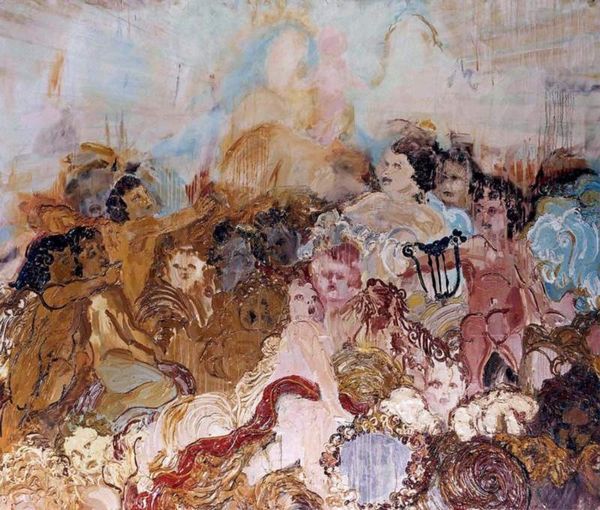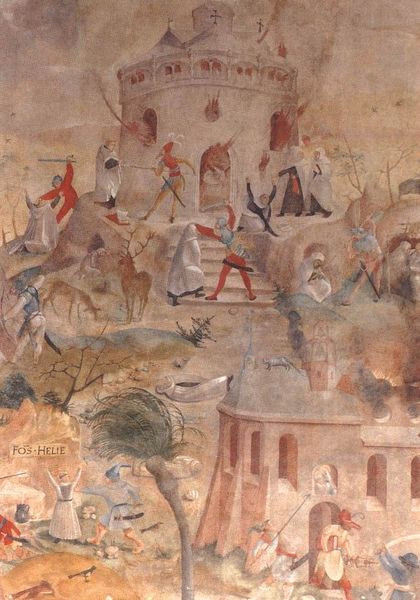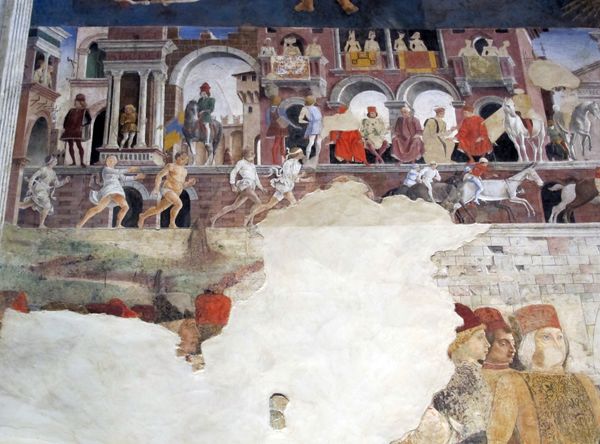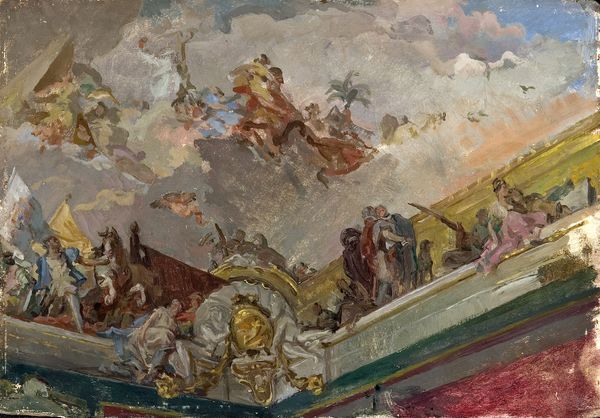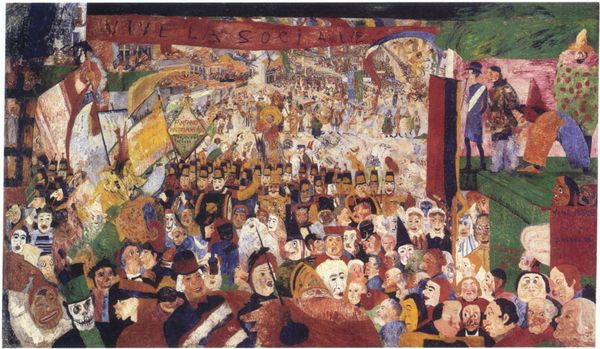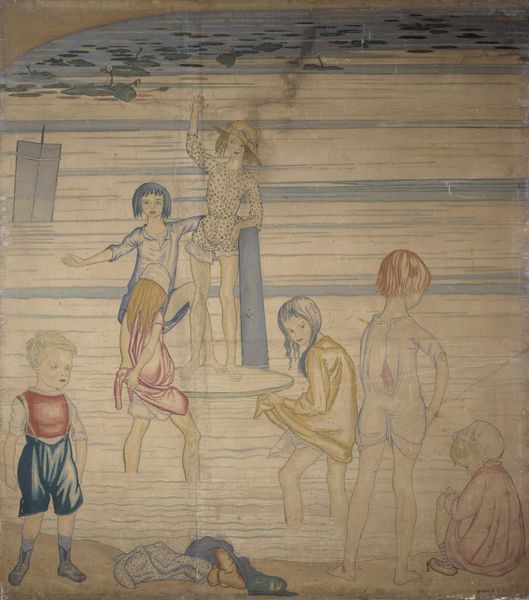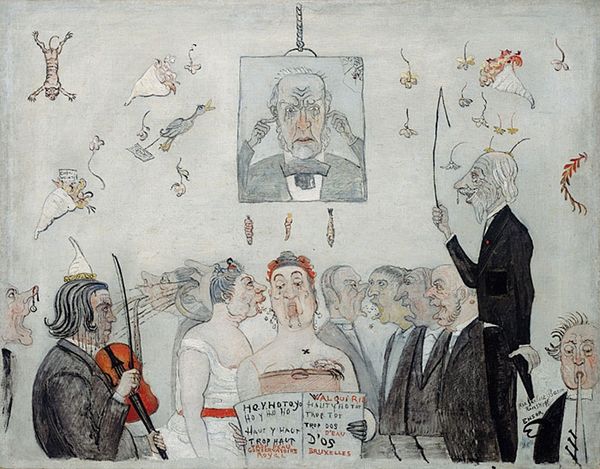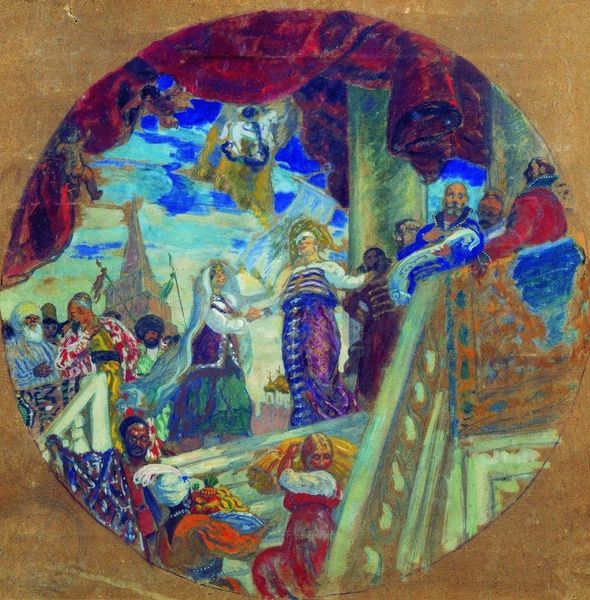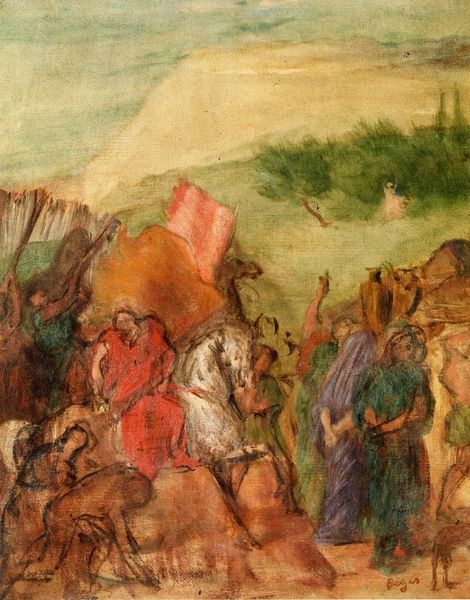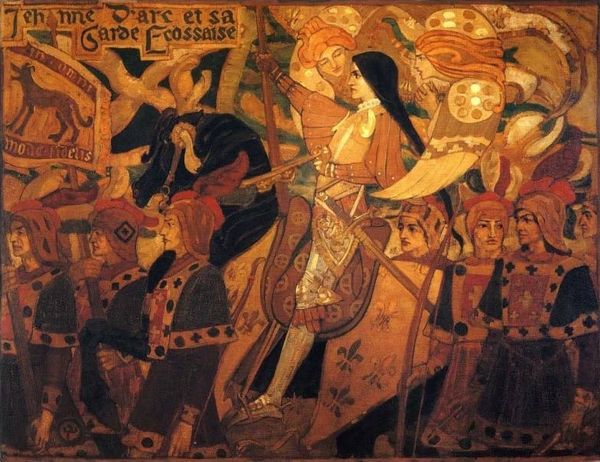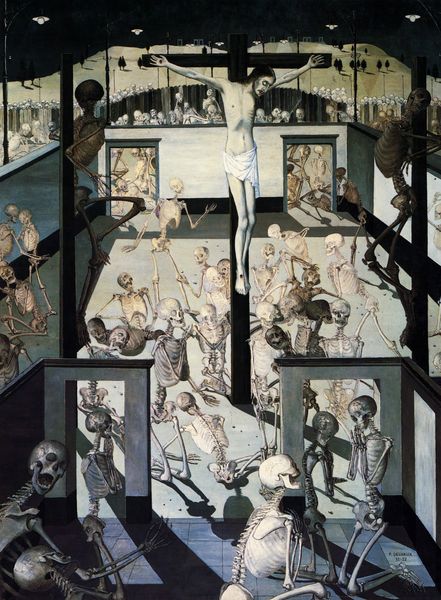
Copyright: Public domain
This watercolor by Jules Pascin depicts an audience at the circus, a scene brimming with spectators observing the spectacle. The most arresting motif here is the act of witnessing itself. Consider the recurring image of the spectator throughout art history, from ancient Roman amphitheaters to Renaissance theater boxes. The collective gaze of the crowd is a powerful symbol, representing shared experience and societal judgment. One may recall the "Ecstasy of Saint Teresa" by Bernini, where the sculpted audience members mirror our own awe. Yet, Pascin’s audience lacks the intense emotion of Bernini’s figures. This detachment invites a psychoanalytic interpretation. Perhaps Pascin is hinting at the modern alienation of the individual within the crowd, a subconscious commentary on the emotional distance prevalent in contemporary society. The faces are mere sketches, lacking detail, suggesting the loss of individuality within the masses. This work invites reflection on our own role as viewers, caught in the cyclical dance between observer and observed.
Comments
No comments
Be the first to comment and join the conversation on the ultimate creative platform.
